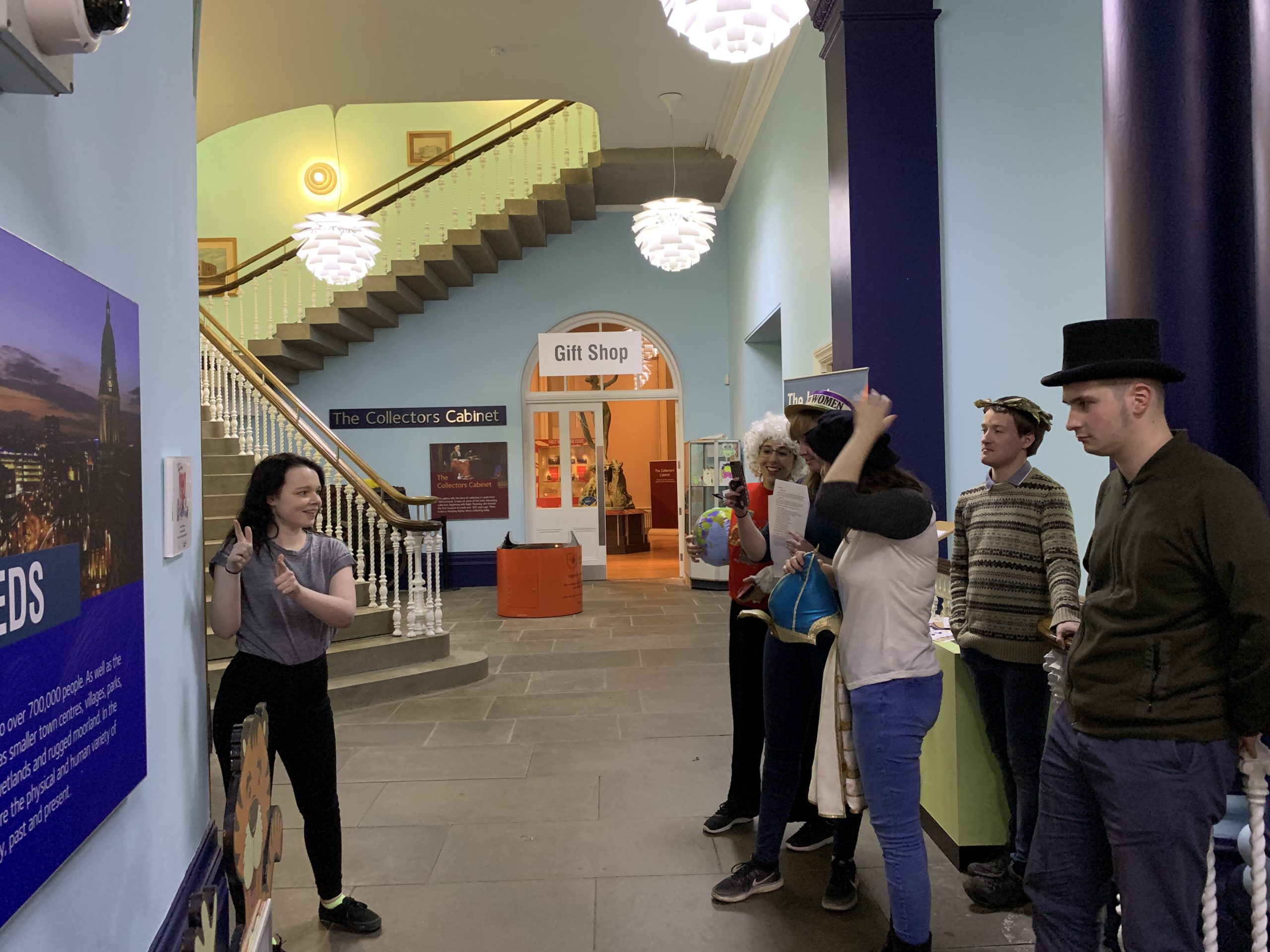Esther Amis-Hughes, Youth Engagement Officer at Leeds City Museum
This is probably not the advice I’d have wanted in 2010 when I first started the Leeds Museums and Galleries young volunteers group, the Preservative Party. I would have been hoping for top ten tips, never-fail ice breakers, session plans, maybe recruitment tips and project ideas.
What I’m going to share, is the exact opposite of what I thought I wanted, but it is, in fact, exactly what I needed. I can’t tell you how you run a youth engagement programme, because the very nature of what I’ve learnt is that it shouldn’t be run to a formula, rather it should rely its on three strengths: you, the young volunteers and the museum.
You
Let’s start with ‘you’. There should, if possible, only be one ‘you’ (notice I hesitate to say group leader). And that ‘you’ should just be themselves. I am the opposite of cool. I am organised. I care a lot about processes and health and safety. I have zero contemporary cultural reference points and my music and fashion tastes haven’t changed since 1997. But, I’m genuine. I care.
I learnt fairly early on to be upfront about what my red lines are, and to let a lot of other stuff go. We do a code of conduct every year (expectations the group should have of me and vice versa), but what we function on is trust. If we are working to a deadline or an event, the group will probably not do anything until the last minute – but they won’t let me down. In return, they trust that I will find a meeting place and organise all of our meetings. They trust that I will fight their corner and do, what they call, the ‘boring bits’. That I will try to resolve conflicts, be an ear for any and all problems. They trust that I won’t make decisions without them. The group isn’t about having just anyone to ‘lead sessions’, it’s about the relationship we’ve formed with each other.
The young volunteers
The greatest asset of any group is the people. Learn what interests each of them, learn what they struggle with, and find a way to make the group ethos fit around that. We have some people who want to research, some who want to think big, some who only want to work on a specific topic, and some people who just want to chat in a safe space. The key is knowing each of these motivations, and somehow tailoring everything to fit.
That flexibility helps to build a culture of mutual respect which I believe our entire group is built around. Getting to know everyone individually, and finding ways they can contribute on their own terms to each project has been much better than traditional ice breakers.
The museum
I used to feel very guilty whenever the groups I was with didn’t do anything directly related to the museum and its collections. How could chatting for two hours possibly class as work? How could Nandos possibly be good use of our stretched budgets? Surely I should be ‘teaching’ formal sessions about our objects?
But actually, this is the foundations of the group. That relationship allows the group to feel comfortable to discover the collection for themselves. I’m asking a lot of these volunteers. Increasingly the subjects they choose are emotive and difficult. (They’ve spent the last 18 months on a project about mental health in Leeds.)
Not only are they devoting precious spare time to the museum, they are putting part of themselves out there for peers within the group, museum professionals and visitors to judge. It’s actually exposing to put parts of yourself and your beliefs on display. The least I can do is show that I’m willing to listen if they’ve had a bad day, and show my appreciation by allocating some of the group budget to food if that is where they tell me its best spent – and they absolutely do.
Last night in our Zoom session, I said I was writing this blog, and asked for advice. ‘Just give free food out for years’, was the common theme. And I do. I cart around bags and bags of Pringles, bananas, chocolate fingers and brownies. And in return Leeds Museums is proud to have a group who have curated displays for the last 10 years, and who will fight tooth and nail for what they call ‘their museum’.
There is a pride and ownership in the site and collection which comes from the trust we’ve shown in their decision making. When the group wanted to publicly question the provenance of our collections (‘Treasured. Smuggled, Stolen or Saved?’ in 2012), our senior management let them. When they asked to curate the Museum service’s major response to the First World War centenary commemorations (‘In their Footsteps’ in 2016), our First World War curator encouraged them. As a result, we have a group full of experts who care deeply about our collections. I only wish I could pay them in more than Pringles and Nandos.
Follow the Preservative Party on Twitter and Instagram.
Search for museum youth groups across the UK in our Museum Youth Group Directory.

